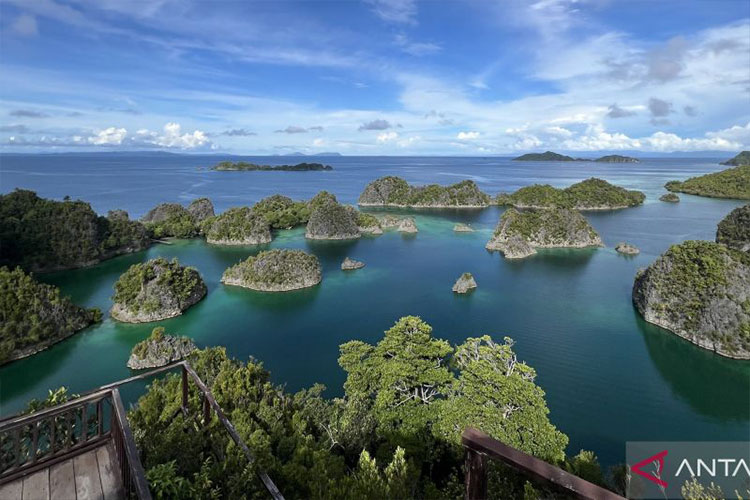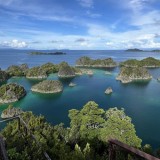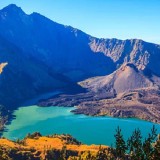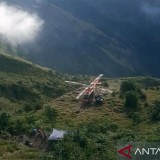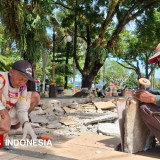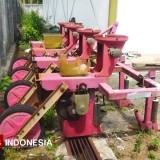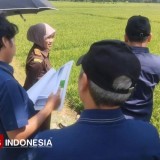TIMES JAZIRAH, RAJA AMPAT – Once a hidden gem in the far reaches of eastern Indonesia, Raja Ampat has rapidly gained global recognition as one of the most biodiverse marine environments on Earth.
With its turquoise lagoons, jagged karst islands, and untouched coral reefs, this archipelago of over 1,500 small islands has become both an icon of Indonesia’s natural beauty and a frontline in the battle between conservation and tourism-driven development.
Located off the northwest tip of the Bird’s Head Peninsula in West Papua, Raja Ampat lies within the Coral Triangle an area celebrated as the global epicenter of marine biodiversity.
According to Conservation International, this region harbors over 75% of the world’s coral species and more than 1,700 species of reef fish. Diving enthusiasts from around the world regard Raja Ampat as the ultimate underwater paradise, drawn by the promise of manta rays, pygmy seahorses, and vast coral gardens teeming with life.
Despite its pristine image, Raja Ampat’s growing popularity has not come without consequences. In recent years, a surge in both domestic and international tourism has placed unprecedented pressure on the region’s delicate ecosystems.
Luxury resorts, dive operators, and increasing boat traffic risk upsetting the fragile balance of marine life. Additionally, the influx of single-use plastics, untreated sewage, and anchor damage has raised alarms among local environmental groups.
In response, the Indonesian government and a coalition of NGOs have been working together to implement community-based marine conservation strategies. One key initiative is the designation of Marine Protected Areas (MPAs), which now cover more than two million hectares of ocean surrounding Raja Ampat.
These zones prohibit destructive practices like bomb fishing and regulate tourism activities, requiring permits and eco-fees that fund conservation and local development.
Local Papuan communities have played an instrumental role in this transformation. Traditional sasi law, a customary practice that restricts the harvesting of marine resources during specific periods, has been revitalized to align with modern conservation science.
“We don’t just protect the reefs because scientists told us to. These waters are our home, our food source, and our culture,” says Lukas Mandacan, a village leader in Arborek Island.
But challenges persist. Climate change remains an ever-present threat, with rising ocean temperatures leading to coral bleaching events in parts of the archipelago.
Meanwhile, debates over land rights, illegal fishing, and the construction of new infrastructure continue to raise ethical and ecological concerns.
Adding to these concerns is the recent controversy surrounding nickel mining concessions in Raja Ampat. Driven by global demand for electric vehicle batteries, several mining licenses were granted on small islands within the protected archipelago.
Environmental groups and indigenous communities strongly opposed these developments, citing threats to marine ecosystems, deforestation, and violations of Indonesian law that prohibits mining on small islands.
In June 2025, following widespread protests and environmental assessments, the Indonesian government revoked permits for four mining companies operating without proper environmental clearance. However, concerns remain about long-term enforcement and the potential return of extractive activities in this fragile region.
Tourism, if managed well, can remain a lifeline for both conservation and local livelihoods. “We don’t want mass tourism like Bali,” explains Rosina Fatem, a local guide. “We want sustainable, respectful travelers who understand that they are entering a living ecosystem," she added.
As Raja Ampat’s fame grows, so does the responsibility to protect it. The archipelago stands not only as a symbol of Indonesia’s natural wealth but as a litmus test for the future of marine conservation in Southeast Asia.
The world may marvel at its beauty, but only a united effort can ensure that Raja Ampat remains a paradise for generations to come. (*)
Artikel ini sebelumnya sudah tayang di TIMES Indonesia dengan judul: Raja Ampat: Indonesia’s Pristine Marine Paradise Facing a Delicate Future
| Writer | : Khodijah Siti |
| Editor | : Khodijah Siti |
